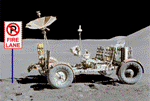Law, College of
Date of this Version
4-1990
Abstract
The United States today possesses a capable fleet of cargo and crew-carrying launch systems, managed by the National Aeronautics and Space Administration, the Department of Defense, and the private sector. Emerging technologies offer the promise, by the turn of the century, of new launch systems that may reduce cost while increasing performance, reliability, and operability~__···· . Continued exploration and exploitation of space will depend on a fleet of versatile and reliable launch vehicles. Yet, uncertainty about the nature of U.S. space program goals and the schedule for achieving them, as well as the stubbornly high cost of space transportation, makes choosing among the many space transportation alternatives extremely difficult. Can existing and potential future systems meet the demand for launching payloads in a timely, reliable, and cost-effective manner? What investments should the Government make in future launch systems and when? What new crew-carrying and cargo launchers are needed? Can the Nation afford them? This special report explores these and many other questions. It is the final, summarizing report in a series of products from a broad assessment of space transportation technologies undertaken by OTA for the Senate Committee on Commerce, Science, and Transportation, and the House Committee on Science, Space, and Technology. In the course of the assessment, OTA has published the special reports, Launch Options for the Future: A Buyer's Guide and Round Trip to Orbit: Human Spaceflight Alternatives; the technical memorandum, Reducing Launch Operations Costs: New Technologies and Practices; and the background papers, Big Dumb Boosters: A Low-Cost Space Transportation Option? and Affordable Spacecraft: Design and Launch Alternatives. In undertaking this effort, OTA sought the contributions of a wide spectrum of knowledgeable individuals and organizations. Some provided information, others reviewed drafts. OTA gratefully acknowledges their contributions of time and intellectual effort. OTA also appreciates the help and cooperation of NASA and the Air Force. As with all OTA reports, the content of this special report is the sole responsibility of the Office of Technology Assessment and does not necessarily represent the views of our advisors or reviewers.


Comments
OTA-ISC-415 (Washington, DC: U.S. Government Printing Office, April 1990.)